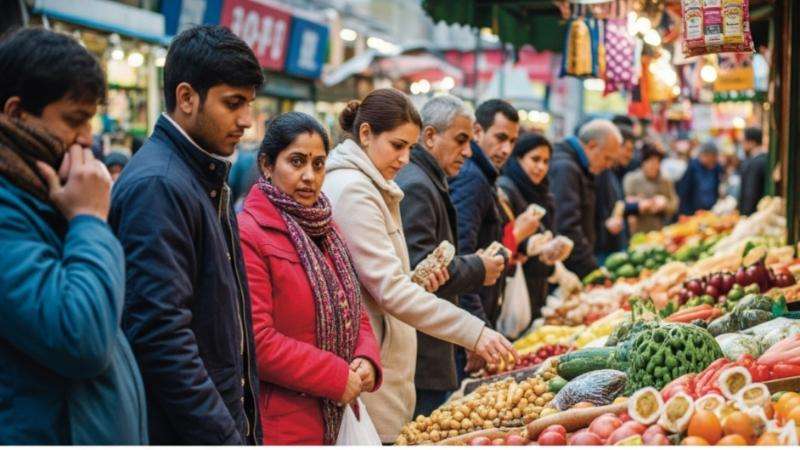UK households are grappling with an escalating cost of living crisis as grocery price inflation reaches its steepest level since February of last year. Data released by market research firm Kantar reveals that food prices in the four weeks to May 18 surged by 4.1% compared to the same period in 2024, an uptick from 3.8% reported just last month. This latest jump is piling on the pressure for families already struggling with a multitude of rising bills, Daily Dazzling Dawn understands.
The relentless climb in food costs is attributed to several factors, including the recent rise in employer National Insurance Contributions and the increase in the minimum wage, which are impacting operational costs for businesses and subsequently pushing up consumer prices. While some categories like chocolate, sun cream, and butters and spreads have seen the most significant price hikes, remarkably, pet food prices have experienced the most notable dip.
Fraser McKevitt, Head of Retail and Consumer Insight at Kantar, commented on the situation, stating, “This latest jump in grocery price inflation takes us into new territory for 2025. Households have been adapting buying habits to manage budgets for some time, but we typically see changes in behaviour once inflation tips beyond 3% to 4% as people notice the impact on their wallets more.” McKevitt noted that an increasing number of consumers are now actively seeking out promotions and discounts to mitigate the impact of rising costs and stretch their budgets further.
This concerning trend comes on the heels of figures released last week, which showed that overall inflation rose to 3.5% in April, marking its highest level in over a year.
Disproportionate Impact on Immigrant Communities
While the rising cost of living affects all households, immigrant communities in the UK are often disproportionately impacted. Families from Bangladeshi, Indian, Pakistani, Nepali, Sri Lankan, and various African (BAME) backgrounds, along with other immigrant families, frequently face unique vulnerabilities that exacerbate the financial strain.
Many immigrant families tend to have lower average incomes, often working in sectors that offer minimum wage or fluctuating hours, making them more susceptible to price shocks. Additionally, a significant portion of their income may be allocated to remittances to support family members in their home countries, leaving less disposable income to absorb rising domestic costs.
Furthermore, cultural dietary preferences often mean a higher expenditure on specific ingredients that might be imported or have less flexible pricing. When staples like cooking oils, rice, spices, and fresh produce — integral to their daily diets — see significant price increases, the impact on their household budgets is immediate and severe.
Who's Impacted Most?
The brunt of this food price spike is being felt most acutely by:
Low-income households: With less financial buffer, even small increases in essential costs can tip these families into hardship.
Families with young children: The need for consistent, nutritious food for growing children adds significant pressure.
Elderly individuals on fixed incomes: Pensioners often have limited ability to increase their income, making them highly vulnerable to inflation.
Immigrant and refugee families: As highlighted above, these communities often navigate additional financial challenges and rely heavily on affordable access to specific food items.
Individuals reliant on food banks: The increased demand due to higher food prices puts further strain on these vital services.
The current trajectory of food inflation suggests that without intervention or a significant shift in economic trends, many households, especially those already on the margins, will continue to face considerable pain in managing their daily expenses.
_4.jpg)
_2.jpg)

_2.jpg)
_3.jpg)



.svg)



